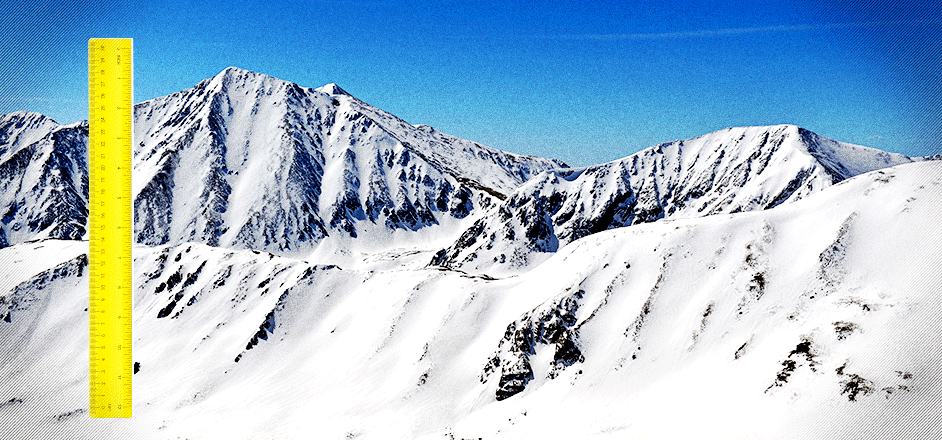Despite being one of the most popular badass-adjacent activities in Colorado, the whole 14ers peakbagging thing is incredibly inconsistent. Many climbers (hikers? walkers?) don’t even agree on how many 14ers there actually are.
Avid addicts of 14ers.com will stick with 58 to the death, but some suggest less. And does South Bross count? What about Massive Green? How about Inverted Backwards Longs Peak with a Cherry on Top?
It’s a confusing game, but at least we can turn to the mountains’ natural elevations as a source of constancy. Right…? Right?! Unfortunately, science is here once again to crush our collective hopes and dreams.
NOAA, the National Oceanic and Atmospheric Administration, is working on releasing a new “gravimetric geoid model.” Yes, that’s what it’s actually called. You can look through a presentation on the new data – er, datum – here. It’s just what you’re looking for if you were hoping to feel like a simpleton frightened by big words today.
The lowdown here is that the highs are about to get lower. Because of NOAA’s new gravity-based estimates of sea level, the average elevation in Colorado is set to shift downwards about two feet.
That sounds insignificant, right? Hardly. Try saying that to Sunshine Peak’s face, tough guy. The San Juan 14er clocks in at about 14,001 feet as per the most recent measurements, and that puts it squarely in NOAA’s evil crosshairs. When the organization officially releases the new sea level readings in 2022, Sunshine may be kicked down to 13,999 feet. Cue the sad trombone, please.
As of now, Sunshine seems like the only 14er in trouble. Huron is close, though it will probably be safe. But what about the poetically-named Pt. 13,001 in the Sawatch? Will we need to start calling it Pt. 12,999? That doesn’t have nearly the transcendent, musiphonious ring to it as Pt. 13,001.
The implications here are, obviously, hilarious. The idea that popular mountains can become deserted simply because of some fancy math is absurd. But to Colorado hikers, those few feet really do matter. Grizzly Peak A is a beautiful hill, yet hardly anyone ventures over to it because it’s a mere handful of feet off from that mythical 14,000 foot elevation.
This all might seem really stupid, and that’s because it is. But at the end of the day, mountaineering has always been a game of inches. Maybe this groundbreaking (is that a pun?) NOAA research will cause a global epiphany to the uselessness of it all and guide all outdoors enthusiasts towards a more pure, “just for the fun of it” style of hiking.
Or maybe, probably, definitely not. Nothing changed on Everest after its recent two-foot promotion. Denverites will keep epic-ing up Grays and Torreys, lucky Europeans will keep basking in the superiority of the Matterhorn, rich people will keep huffing bottled oxygen on Everest, and scientists will keep measuring and re-measuring the heights of mountains. So it goes.


Leave a Reply
You must be logged in to post a comment.